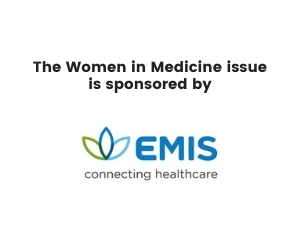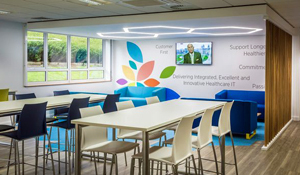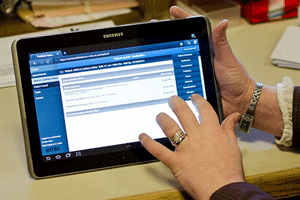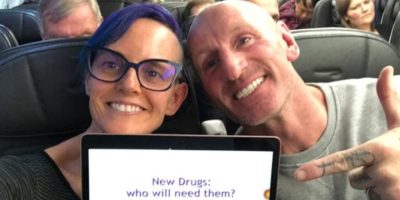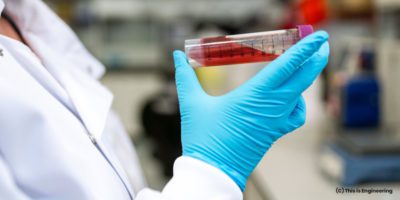Alex Eavis is the director of analytics at EMIS, part of EMIS Group Plc. EMIS Group is a healthcare information technology company that is pioneering better information sharing in healthcare. Alex previously co-founded social enterprises How Do I? and Alcove.
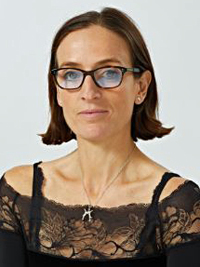
“I get pretty enthusiastic about the potential to make a difference, and I’d like to think that people that join our team are also enthusiastic about it because it’s super exciting.”
A weird and wonderful career
I did an experimental psychology degree at the University of Oxford. I’ve had a bit of a weird and wonderful career, doing lots of different things. I worked for Wandsworth Primary Care Trust, and South West London and St. George’s Mental Health NHS Trust, teaching prisoners in HMP Wandsworth; it was one of the first projects to improve the mental health and wellbeing of prisoners. So, I ended up at 23 teaching life skills courses in the biggest male president in the UK. I taught anger management, assertiveness and positive thinking, and relationship skills.
It was quite pioneering at the time because nobody was really talking about positive mental health then and wellbeing. Post-COVID, this is something we talk about all the time now.
From that, I’ve worked in corporate finance for eight years, turned to the dark side and private sector. And then I left there wanting to do something more socially rewarding, and set up my first business. I was a governor at a special needs school at the time, and wanted to do something in the care sector.
So, we set up a business called Alcove, which was looking for using technology to keep people living independently in their own homes, so they didn’t have to move into care homes. So, passive home monitoring would send alerts to loved ones or carers if anything happened that was out the ordinary. So, if somebody had a fall, or they hadn’t moved or they could be dehydrated because they’re not using the tap a lot or not drinking enough water, etc.
Then I exited that business and started a business called Dovetail, which was really set up to tackle a problem that I encountered in the first business, Alcove, about how you share data, medical data between health and, at the time, social care.
When people were leaving the hospital, there was very little data sharing, which was actually putting people’s health and lives at risk, because the information wasn’t travelling with them to social care – NHS to non-NHS organisational data sharing. So, we tackled that problem with Dovetail lab. And that got acquired by EMIS Group, which is where I currently work at the moment as the director of analytics. That was acquired in November 2018, so I’ve been in this group a couple of years now.
Becoming part of a bigger group of companies

Explaining blockchain and distributed ledger technology
As a network of nodes or computers, you store a copy of all information on each computer. And the information that you store also has a history of that block, which also has the history of the previous block. So, you would have the information, data and the timestamp of what you’re adding to the ledger, but also what you added to the ledger previously, and that’s what creates the chain, so it’s all connected. It’s distributed across a network of different computers.
What we store on the blockchain is a record of the consent to share data. So, when you would use any kind of patient-facing application or software, it would check that you are who you are. That’s why some identity services would ask you to take a selfie and a photo of your ID document. And then it would ask you, for example: “Are you happy to share information between your GP and Oxford University who are doing some research on leukaemia?” You consent to that, and the record of that consent is stored on a distributed ledger.
That’s called an immutable record. You can’t go back and edit that. If some mistake has been made, you can add another block to the chain saying a previous record was incorrect. But you can never go back and cross through it or delete or delete any information. That is what makes it really good for very sensitive information in particular, like financial information or medical information.
Impact of COVID-19
From an analytics perspective, it has been incredibly, incredibly busy. There is obviously the need to get data quicker, more data and join that up across local and national geographies. That needs to be done much, much quicker than it’s ever needed to be done before.
So, there are clinical trials we’ve done in with Oxford University, where they are testing medications that already exist and proven to see if they could be rapid treatments for COVID-19.
We did a big survey in partnership with Oxford University and the Royal College of General Practitioners Research and Surveillance Centre, to engage patients through our patient access app, and engage them in terms of what symptoms they were having in relation to COVID. There’s also the secondary impact – the mental health impact the socio-economic impact of lockdown: We had over 50,000 responses to that and now we’ve got researchers looking at the trends and insights that can be generated from that sort of data.
How far technology has come
If you think back to the time pre-iPhone, you’ll see how much more convenient life has become with the use of technology. It’s fantastic that you can buy with one click, you can get things to delivered to your door and the next day, but if you think about how powerful that is, if you could harness that, to help the people that need it the most, the potential is pretty exciting.
That’s where the advances are yet to be seen. We haven’t necessarily, in health care or care, see the sort of step changes that technology could bring about. That’s to come. In healthcare where everything has to be evidence-based and clinically safe, it’s not surprising we’re a little bit further behind consumer commercial uses of technology since there’s a much longer time to bring a product to market. But the exciting thing is we’re on the road – we’re just at the beginning of it and there’s going to be some real change that’s going to come very shortly.
That’s just the beginning. The choice that has been provided to the patient as we have seen with COVID is amazing. And still, I think the biggest shift has been to the telephone rather than, surprisingly, rather than video. There are some amazing apps where you can manage your long-term conditions using remote consultations with your care providers.
We’re starting to see how the clinical automation and intelligence is built-in, whether that’s a speech to text or coded text for clinicians rather than notetaking, or whether it’s algorithms that can be built into clinical systems that can flag that you’re at risk of a particular condition by processing terabytes of health data in minutes. The potential is huge.
Recruiting for informatics and software development roles
In the build of our cloud-based analytics platform, we’ve been recruiting a team of both software engineers, data scientists, and informaticians, and particularly clinical implementations. It is really important to bring the data science and the domain expertise into the same room, because you really need that clinical input to understand it and get the most value from it, particularly into health data, which is very specialist.
I think it’s the next step in healthcare data-driven technologies. I get pretty enthusiastic about the potential to make a difference, and I’d like to think that people that join our team are also enthusiastic about it because it’s super exciting.
If you think about the workforce of the NHS, it’s about 70% female. In terms of the care providers, it’s roles that are traditionally a bit gender-biased, so there are more women in the care providing roles than men, yet at the management level and innovation level, that ratio is switched.
I think it’s a real opportunity for women to get involved in building solutions that make the working lives of the amazing people that work in the NHS on the frontline delivering care easier, but also, we’re all patients, right? So, all the work that we do, as in the analytics team, ultimately benefits ourselves. Whether that’s lengthening our lives, making us healthier, keeping us fit, and that’s pretty special. You don’t get to do that every day when you go to work normally.
Coming up next
We’re just at the start of our journey in the analytics team. So, we’ve launched our first product called Explorer, which is part of the EMIS-X Analytics suite. It’s a self-service business intelligence tool, which is there to help our NHS customers be able to search and query large healthcare data sets, at speed – giving them much, much quicker insights.
They can do sort of coalface analytics, create insights, change their working practices accordingly, and then see how the impact of that. But we are working on quite a lot of exciting new functionality, which will be coming out next year.
The idea of embedding algorithms that can process large and look at large amounts of healthcare data, and then find people who might be at risk, so supporting diagnoses or flagging people that might be suitable for a particular treatment or other intervention. That’s where it starts to get really interesting and we’ll really see the potential of analytics in the NHS come to fruit.
https://www.linkedin.com/in/alexandra-eavis-8690326/
